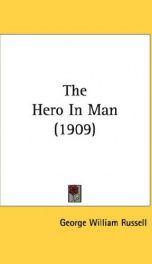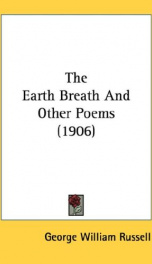Russell George William

Not to be confused with George William Erskine Russell (1853 - 1919). George William Russell (10 April 1867 – 17 July 1935) who wrote under the pseudonym Æ (sometimes written AE or A.E.), was an Irish nationalist, writer, editor, critic, poet, and painter. He was also a mystical writer, and centre of a group of followers of theosophy in Dublin, for many years. Russell was born in Lurgan, County Armagh. His family moved to Dublin when he was eleven. He was educated at Rathmines School and the Metropolitan School of Art, where he began a lifelong friendship with William Butler Yeats.[1] He started working as a draper’s clerk, then worked many years for the Irish Agricultural Organization Society (IAOS), an agricultural co-operative movement founded by Horace Plunkett in 1894. The two came together in 1897 when the co-operative movement was eight years old. Plunkett needed an able organiser and W. B. Yeats suggested Russell, who became Assistant Secretary of the IAOS. He was an able lieutenant and travelled extensively throughout Ireland as a spokesman for the society, mainly responsible for developing the credit societies and establishing co-operative banks in the south and west of the country whose numbers rose to 234 by 1910. The pair made a good team, with each gaining much from the association with the other.[2] Russell was editor from 1905-1923 of The Irish Homestead, the journal of the IAOS, and infused it with the vitality that made it famous half the world over. His gifts as a writer and publicist gained him a wide influence in the cause of agricultural co-operation.[1] He was also editor of the The Irish Statesman from 15 September 1923 until 12 April 1930. He used the pseudonym "AE", or more properly, "Æ". This derived from an earlier Æ'on signifying the lifelong quest of man, subsequently shortened. His first book of poems, Homeward: Songs by the Way (1894), established him in what was known as the Irish Literary Revival, where Æ met the young James Joyce in 1902 and introduced him to other Irish literary figures, including William Butler Yeats, to whom he was close. He appears as a character in the "Scylla and Charybdis" episode of Joyce's Ulysses, where he dismisses Stephen's theories on Shakespeare. His collected poems appeared in 1913, with a second edition in 1926. His house in Rathgar Avenue in Dublin became a meeting-place at the time for everyone interested in the economic and artistic future of Ireland.[1] His interests were wide-ranging; he became a theosophist and wrote extensively on politics and economics, while continuing to paint and write poetry.[1] Æ claimed to be a clairvoyant, able to view various kinds of spiritual beings, which he illustrated in paintings and drawings. The keynote of his work may be found in a motto from the Bhagavadgita prefixed to one of his earlier poems I am Beauty itself among beautiful things.[1] He moved to England after his wife’s death in 1932 and died in Bournemouth in 1935.[1] He is buried in Mount Jerome Cemetery, Dublin.
do you like this author?
What readers are saying
What do you think? Write your own comment on this book!
write a commentWhat readers are saying
What do you think? Write your own comment on this author!
write a commentBook list

The Nuts of Knowledge
Lyrical Poems Old and New
Series:
Unknown
Year:
Unknown
Raiting:
3.5/5
Show more
add to favoritesadd In favorites

The National Being
Some Thoughts on an Irish Polity
Series:
Unknown
Year:
Unknown
Raiting:
5/5
Show more
add to favoritesadd In favorites
Book list

The Nuts of Knowledge
Lyrical Poems Old and New
Series:
Unknown
Year:
Unknown
Raiting:
3.5/5
Show more
add to favoritesadd In favorites

The National Being
Some Thoughts on an Irish Polity
Series:
Unknown
Year:
Unknown
Raiting:
5/5
Show more
add to favoritesadd In favorites
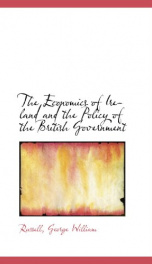
the economics of ireland and the policy of the british government
Series:
Unknown
Year:
Unknown
Raiting:
5/5
Show more
add to favoritesadd In favorites
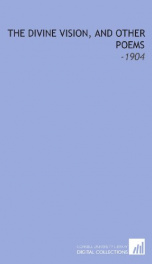
the divine vision and other poems
Series:
Unknown
Year:
Unknown
Raiting:
4/5
Originally published in 1904. This volume from the Cornell University Library's print collections was scanned on an APT BookScan and converted to JPG 2000 format by Kirtas Technologies. All titles scanned cover to cover and pages may include marks notations and other marginalia present in the original volume.
Show more
add to favoritesadd In favorites

collected poems
Series:
Unknown
Year:
Unknown
Raiting:
3.5/5
COLLECTED POEMS OF GEORGE WILLIAM RUSSEL. This book holds what poetry of mine I would wish my friends to read. I have omitted what in colder hours seemed to me to have failed to preserve some heat of the imagination but in that colder mood I have made but slight revision of those retained. However imperfect they seemed, I did not feel that I could in after hours melt and remould and make perfect the form if I was unable to do so in the intensity of conception, when I was in those heavens we breathe for a moment and then find they are not for our clay. When I first discovered for myself how near was the King in His beauty I thought I would be the singer of the happiest songs. Forgive me, Spirit of my spirit, for this, that I have found it easier to read the mystery told in tears and understood Thee better in sorrow than in joy that, though I would not, I have made the way seem thorny, and have wandered in too many byways, imagining myself into moods which held Thee not. I should have parted the true from the false, but I have not yet passed away from myself who am in the words of this book. Time is a swift winnower, and that he will do quicklyfor me. Contents include: AWAKENING . . . . . . . 2 BY THE MARGIN OF THE GREAT DEEP . . 3 THE UNKNOWN GOD . THE HERMIT OVERSOUL ....... . . . 5 6 8 THE GREAT BREATH ..... 9 DUSK- NIGHT DAWN- DAY, 13 ECHOES 14 STAR TEACHERS . . . . . . 15 WINTER . 16 ANSWER . . . . . . . . 17 THE GIFT .18 THE DIVINE VISION . . . . . 19 FROLIC . . . . . . . . 21 DESIRE........ 22 THE PLACE OF REST . . . . 23 THE DAWN OF DARKNESS .... 24 ix 10 ii 12 CONTENTS PAGE 26 .... WAITING . . THE SYMBOL SEDUCES . . . . v 27 REST . . . ... . . 28 PITY .... , . . . 29 THE CITY . . . . . . . 30 DUST . . . . . . . 34 THE VIRGIN MOTHER . . . . . 35 DANA 37 THE EARTH BREATH . . . . . 39 ALTER EGO ....... 41 NATURAL MAGIC . . . . . . 43 CHILDHOOD ....... 45 THREE COUNSELLORS ..... 46 SYMBOLISM ....... 47 IMMORTALITY....... 49 MYSTERY ....... 50 A NEW WORLD . . . . . . 52 SACRIFICE ....... 54 BROTHERHOOD. . . . . . . 55 ON A HILL-TOP . . . . . . 57 THE VOICE OF THE WATERS .... 59 KRISHNA ....... 61 - . . . . . . FREEDOM ..63 HE EARTH . . . . . . . 64 To ONE CONSECRATED . . . . 66 CONTENTS PAGE A WOMANS VOICE .... 68 THE SPIRIT OF THE GAY .... 69 HEROIC LOVE . . . . . 7 DIVINE VISITATION. , . ... 7 1 PARTING . . . . 7 2 NGHT . . ....-. .. xi 73 ...... 75 DAWN SONG . THE HOUR OF THE KING . ... 77 THE HEROES...... 79 PAIN 82 ...... SELF-DISCIPLINE . . 8 3 THE MAN TO THE ANGEL .... 84 A VISION OF BEAUTY ..... 86 THE VESTURE OF THE SOUL.... 89 THE FREE . ..... 9 COMFORT . . 9 1 ..... 94 WARNING .... 93 REFUGE..... ... 95 THE BURNING-GLASS . . . . .-H 9 6 BABYLON .... 97 THE FACES OF MEMORY . . . . . 99 THE MESSAGE . . 9 IO THE SINGING SILENCES ..... xFFiNrr . . . . . IO1 . IO A CALL . v 3 IO 5
Show more
add to favoritesadd In favorites
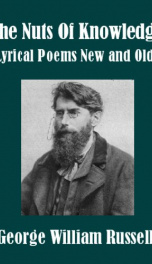
The Nuts of Knowledge
Series:
Unknown
Year:
Unknown
Raiting:
4/5
The Nuts of Knowledge Immortality The Hermit The Great Breath The Divine Vision The Burning Glass A Vision of Beauty Rest The Earth Breath Divine Visitation The Master Singer Aphrodite Illusion Babylon Alter Ego Krishna Symbolism Sung on a By-Way The Hunter The Vision of Love A Call of the Sidhe Janus The Grey Eros The Memory of Earth By the Margin of the Great Deep Three Counsellors, Desire The Place of Rest Sacrifice Reconciliation
Show more
add to favoritesadd In favorites
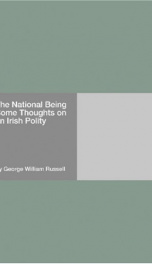
The National Being
Series:
Unknown
Year:
Unknown
Raiting:
3/5
from the introductory:To The Right Hon. Sir Horace Plunkett A good many years ago you grafted a slip of poetry on your economic tree. I do not know if you expected a hybrid. This essay may not be economics in your sense of the word. It certainly is not poetry in my sense. The Marriage of Heaven and Earth was foretold by the ancient prophets. I have seen no signs of that union taking place, but I have been led to speculate how they might be brought within hailing distance of each other. In my philosophy of life, we are all responsible for the results of our actions and their effects on others. This book is a consequence of your grafting operation, and so I dedicate it to you.-- A.E. --This text refers to the Kindle Edition edition.
Show more
add to favoritesadd In favorites
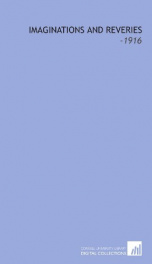
Imaginations and Reveries
Series:
Unknown
Year:
Unknown
Raiting:
2.5/5
Originally published in 1916. This volume from the Cornell University Library's print collections was scanned on an APT BookScan and converted to JPG 2000 format by Kirtas Technologies. All titles scanned cover to cover and pages may include marks notations and other marginalia present in the original volume.
Show more
add to favoritesadd In favorites
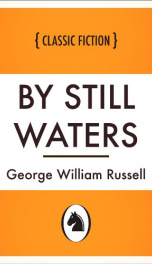
By Still Waters
Series:
Unknown
Year:
Unknown
Raiting:
4.5/5
George William Russell (1867-1935) who wrote under the pseudonym AE was an Anglo-Irish supporter of the Nationalist movement in Ireland, a critic, poet, and painter. He was also a mystical writer, and centre of a group of followers of theosophy in Dublin, for many years. He worked many years for the Irish Agricultural Organization Society (IAOS), an agricultural co-operative movement founded by Horace Plunkett. When Plunkett needed an able organiser, W. B. Yeats suggested Russell, who became Assistant Secretary of the IAOS. Russell was editor from 1905-1923 of The Irish Homestead, the journal of the IAOS, and infused it with vitality that made it famous half the world over. He was also editor of The Irish Statesman from 1923 until 1930. Amongst his other works are The Nuts of Knowledge: Lyrical Poems Old and New (1903), By Still Waters: Lyrical Poems Old and New (1906), Imaginations and Reveries (1915), AE in the Irish Theosophist (1937) and The National Being: Some Thoughts on an Irish Polity.
Show more
add to favoritesadd In favorites
What readers are saying
What do you think? Write your own comment on this author!
write a commentGenre
- Books
- Books / History / Europe / Ireland
- Books / Children's Books / History & Historical Fiction
- Literature & Fiction
- Literature & Fiction / Poetry
- Literature & Fiction / Classics
- Religion & Spirituality / Christianity / Literature & Fiction / Fiction
- Literature & Fiction / Poetry / Anthologies
- Nonfiction / Education / Education Theory / History
- Literature & Fiction / Drama / British & Irish
if you like Russell George William try:
readers also enjoyed
What readers are saying
What do you think? Write your own comment on this author!
write a commentGenre
- Books
- Books / History / Europe / Ireland
- Books / Children's Books / History & Historical Fiction
- Literature & Fiction
- Literature & Fiction / Poetry
- Literature & Fiction / Classics
- Religion & Spirituality / Christianity / Literature & Fiction / Fiction
- Literature & Fiction / Poetry / Anthologies
- Nonfiction / Education / Education Theory / History
- Literature & Fiction / Drama / British & Irish
if you like Russell George William try:
readers also enjoyed
Do you want to read a book that interests you? It’s EASY!
Create an account and send a request for reading to other users on the Webpage of the book!
